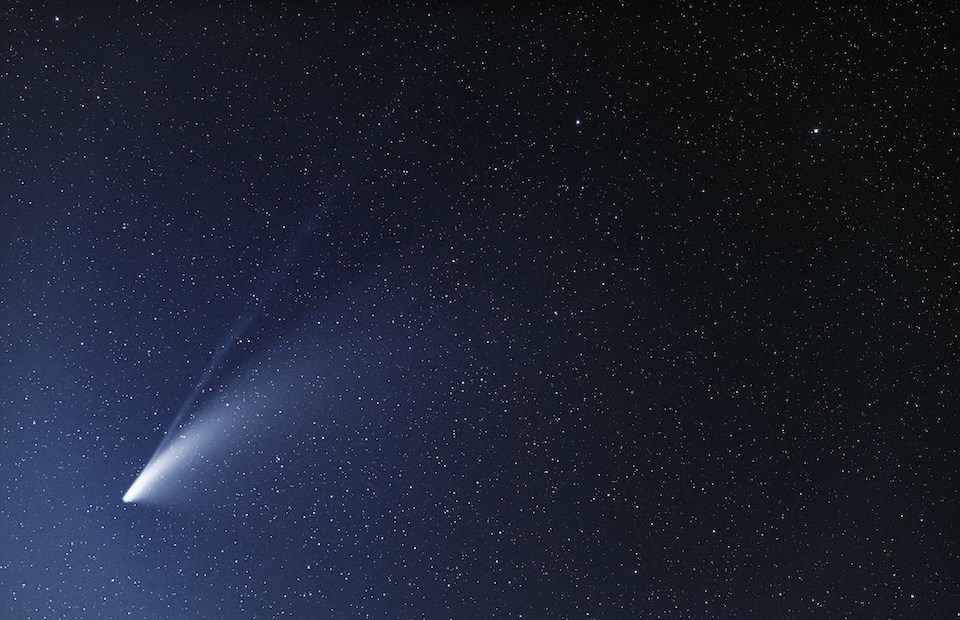Skywatchers can see a recently discovered, rare comet that won't likely return to the Lower Mainland in our lifetime...or several thousand of them.
Rosanna Tilbrook, an astronomer at the H.R. MacMillan Space Centre, tells V.I.A. Comet C/2023 A3 was discovered in early 2023 by the Purple Mountain Observatory in Zijinshan, China and then by ATLAS South Africa (which constitutes the 'Tschunshan-ATLAS' part of [its] name).
C/2023 A3 is considered a "long period" comet because astronomers estimate it will take the object over 200 years to orbit the sun.
"We think C/2023 A3 won't be back for another 80,000 years, or it might even get ejected from the Solar System, so this will be our only chance to view it," she says of the rare celestial event.
Comet A3 is thought to have originated in the Oort cloud (like all long-period comets).
"Scientists believe this is a spherical cloud of icy material (kind of like a big bubble) which lies way out beyond Pluto, around 0.03 to 3.2 light-years away," she describes.
"This material was formed at the birth of our solar system, around 4.6 billion years ago, making Comet C/2023 A3 extremely old!"
Tilbrook says comets are comprised of chunks of ice, dust, and rock, around the size of a small town, and often described as "dirty snowballs."
"When they get close to the sun, they heat up and release dust and gas, producing a long misty 'tail' that can extend for millions of miles. That's why comets look like a bright fuzzy streak across the sky," she explains.
Viewing comet A3 in Metro Vancouver
Unfortunately, viewing C/2023 A3 may prove challenging at this time. Currently, it is close to the horizon in the east and viewed best before dawn.
Comet hunters can view it over the horizon in the west after sunset starting around Oct. 17 and heading into the rest of the month (see chart two), according to In-the-Sky.org data.
Comet C/2023 A3 will make its closest approach to the Earth on Oct. 12 but it won't be visible from Vancouver.
Tilbrook says the comet is fairly faint and its proximity to the sun makes it harder to observe. Skywatchers need binoculars to see it now but it might get brighter in the coming weeks.
"It's worth trying to catch a glimpse if you can, as, on average, there's only one bright comet in our night skies every year."
Anyone interested in catching a glimpse of the rare comet can also stay up-to-date with hyperlocal Metro Vancouver weather forecasts across 50 neighbourhoods in the Lower Mainland with V.I.A.'s Weatherhood to plan their viewing experience.



